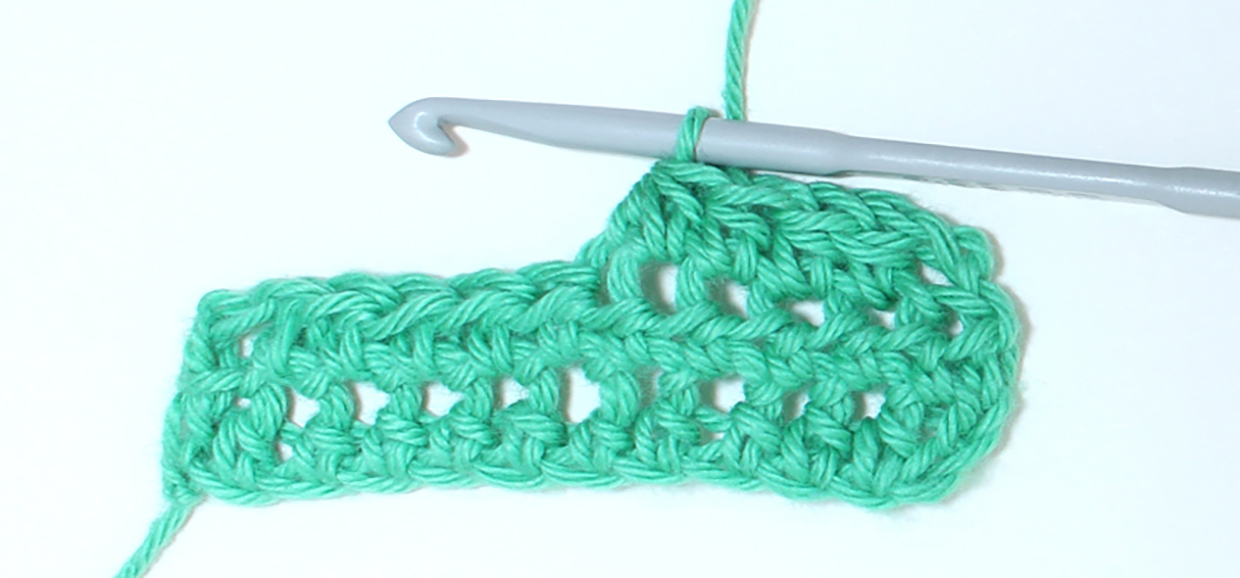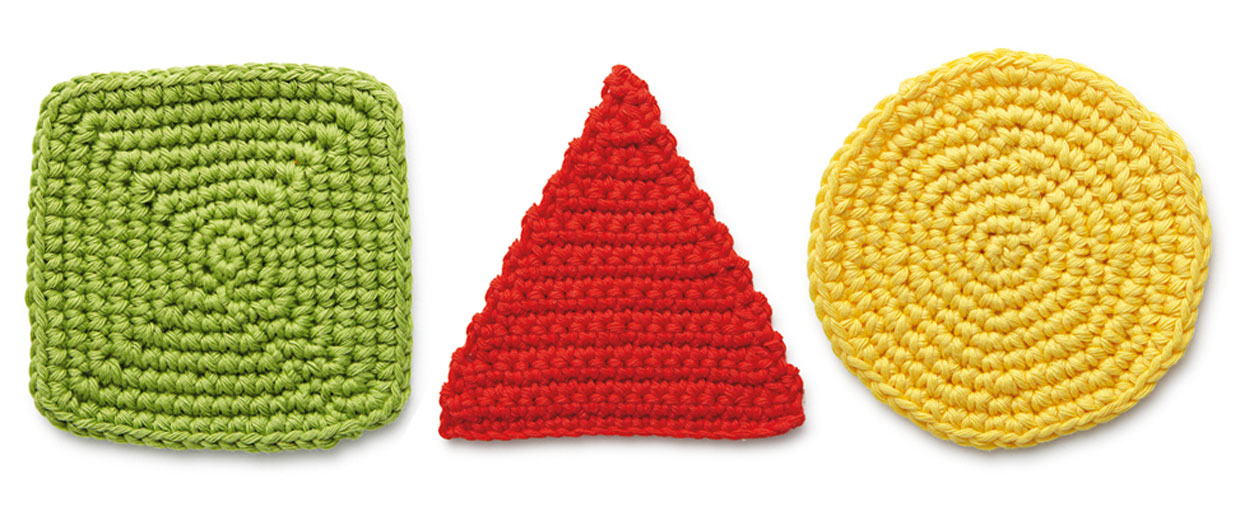How to double crochet decrease - dc2tog
Step 1
In this first example, we’re going to show you how to work a dc2tog – this stands for double crochet two together. We’ll be making our first dc2tog double crochet decrease in the first two stitches marked below. In US terms this would be called a single crochet decrease or sc2tog
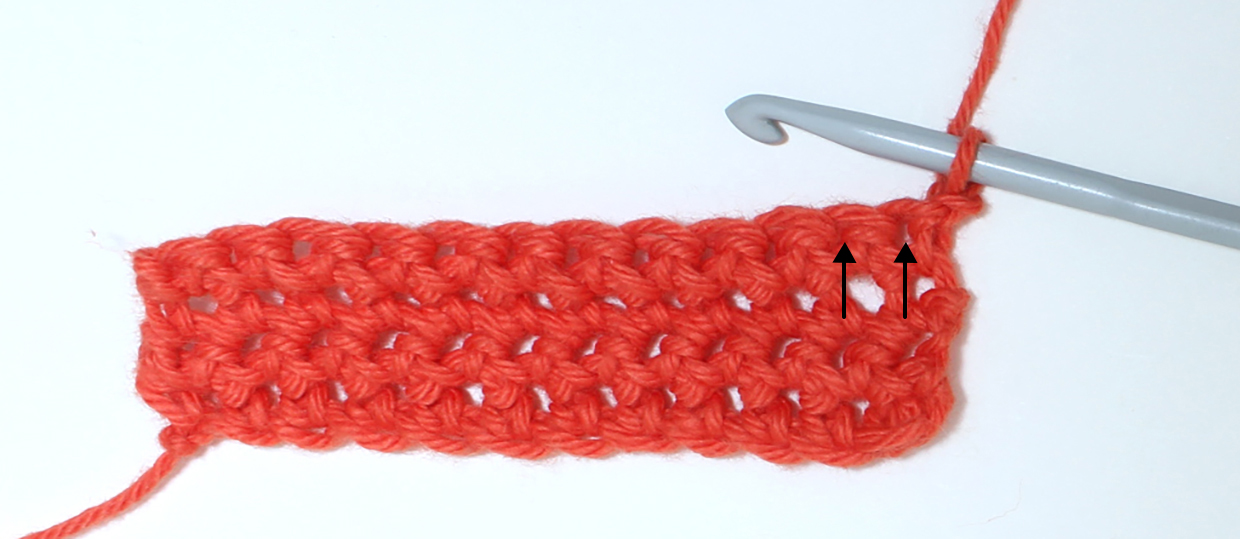
Start by inserting the hook under the top two loops of the first stitch and begin to work a double crochet stitch in the usual way – insert your hook into stitch, yrh (yarn round hook) and pull loop through (2 loops on hook) – But then STOP – Don’t complete the stitch with the final yrh and pull through 2 loops…
Step 2
… instead, with 2 loops remaining on our hook, we’re going to start another dc stitch in the next stitch…
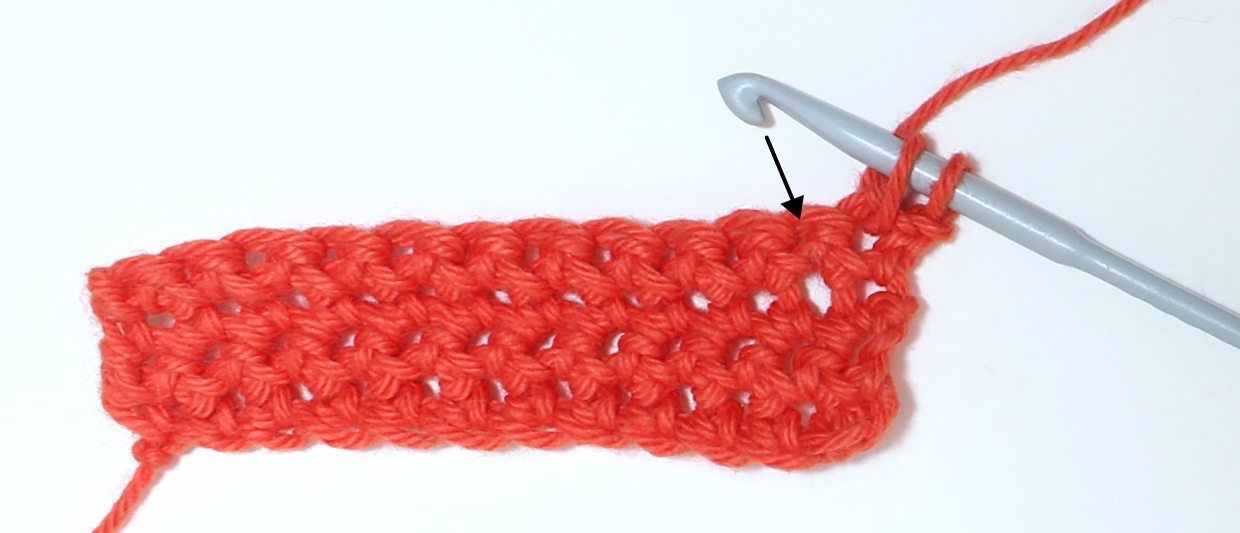
…so again, insert your hook into stitch, yrh and pull loop through – then stop again! You should now have 3 loops on your hook…
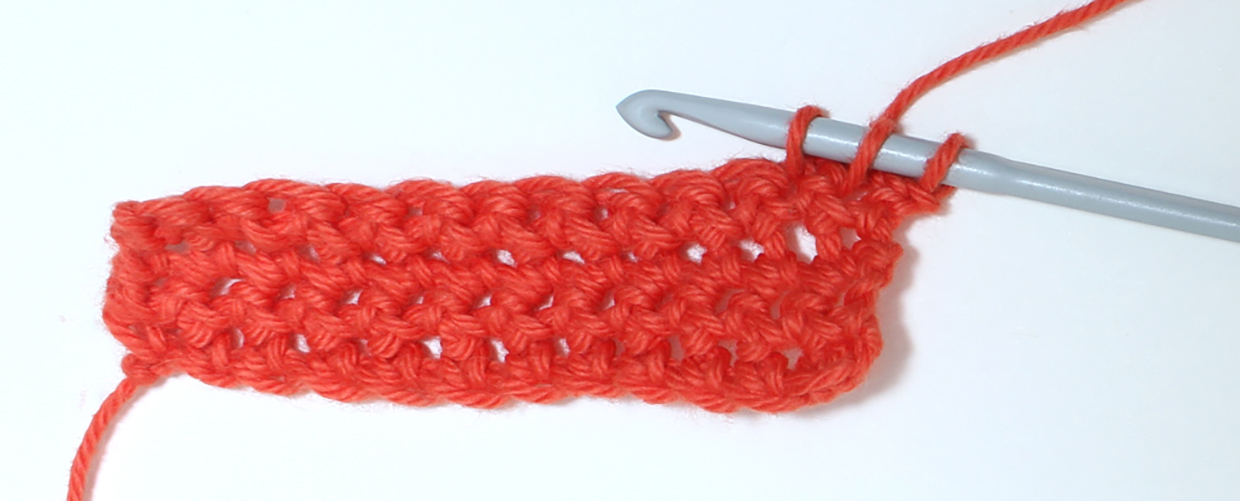
Step 3
…Now we’re going to yrh, and pull that loop through all 3 loops on your hook in one go!
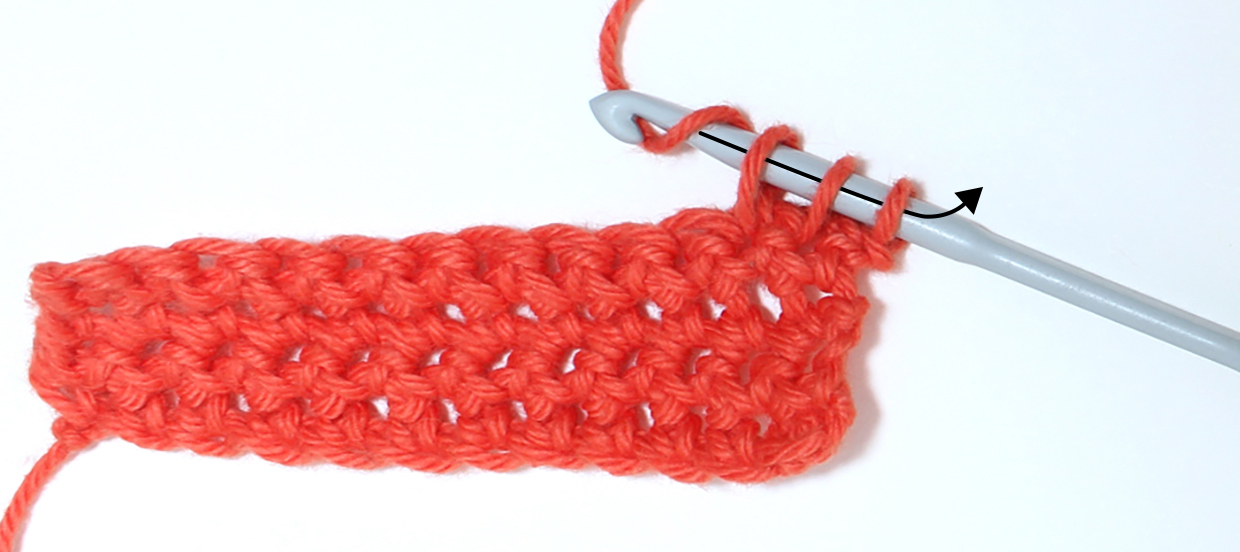
And that’s your dc2tog double crochet decrease complete! If you look at the completed stitch below, you can see that it has transformed the two stitches into one single stitch.
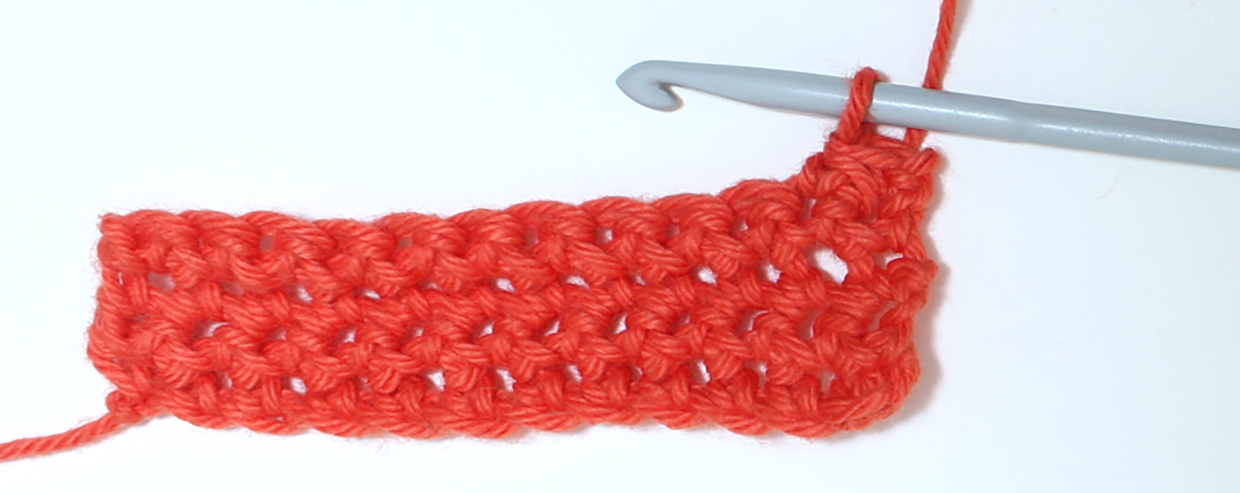
You can work dc2tog stitches at any point along the row in the same way. By working double crochet decrease stitches at the edges, you can make your sides slope inwards, and you can create different angles of this slope by working decreases on every other row or similar combinations.
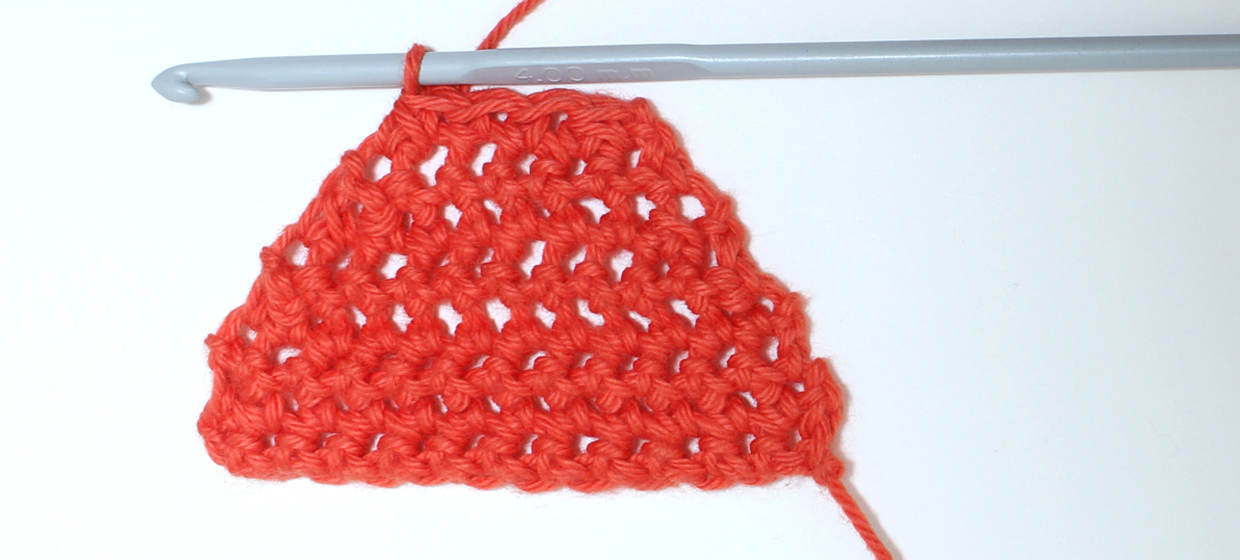
You may come across dc3tog stitches or even higher (although dc4tog stitches are pretty rare). If you come across these – it’s essentially the same process as a double crochet decrease, where you work each stitch up to the last yrh of the stitch, then finish with a yrh and pulling through all the loops on your hook.
For example, a dc3tog (double crochet 3 together) would be:
- Insert hook into stitch, yrh and pull loop through (2 loops on hook),
- Insert hook into next stitch, yrh and pull loop through (3 loops on hook),
- Insert hook into next stitch, yrh and pull loop through (4 loops on hook),
- Yrh and pull through all 4 loops.
How to treble crochet decrease (tr2tog) at the start of a row
Step 1
Treble crochet decrease stitches again follow the same theory as double crochet decrease stitches – where you work up to the last yrh of the stitch, do the same for the next stitch and then yrh and pull through all loops to bring them together into one stitch.
However, if you want to make a treble crochet decrease at the start of the row it’s ever so slightly different – so we’ll show you how to do a treble crochet decrease at the start of the row as well as midway through the row. In US terms this would be called a double crochet decrease or dc2tog
To make a tr2tog at the start of the row, instead of starting with a 3ch, we’re actually going to start with a 2ch turning chain. This may seem odd, but if we break down the traditional 3ch turning chain, 2 of the chains give you the height of the stitch, and the third chain is the one you work into on the next row.
But we don’t need that third chain here because we’re wanting to decrease stitches, so we only need to chain 2 and on the next row we won’t work into the turning chain.
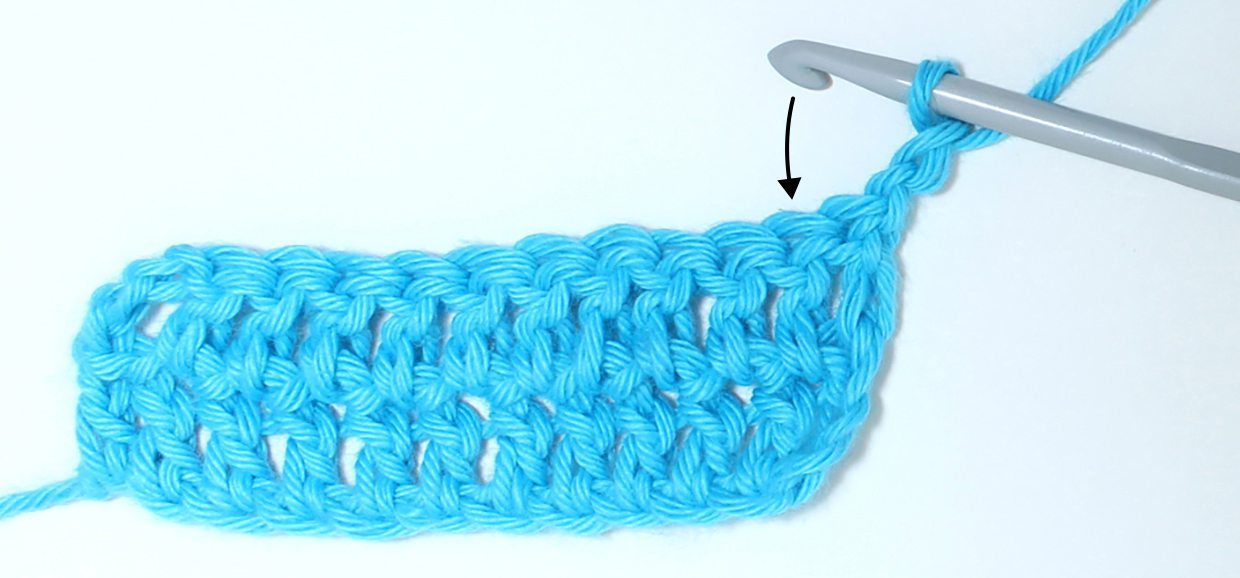
Then just work a treble into the normal place for your first stitch on a treble row (remember that normally you skip the stitch at the base of your turning chain as that counts as a stitch, so the next stitch along which is marked above is your first stitch).
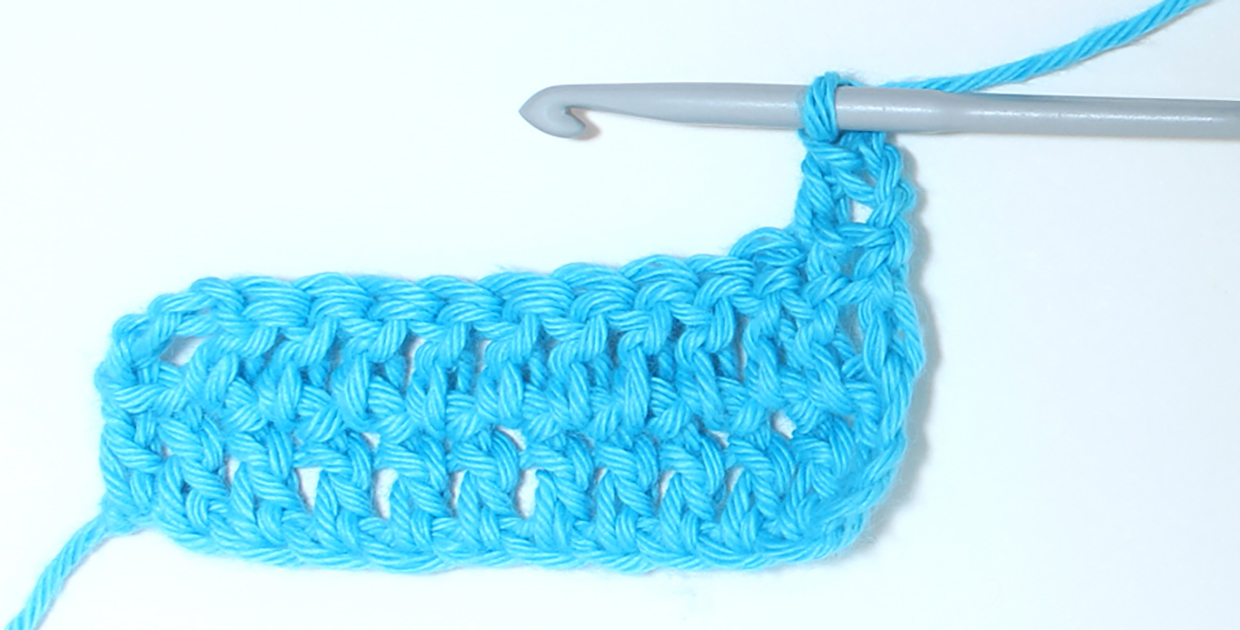
And that’s how you make a decrease at the start of a treble crochet row. It may seem a little bit strange and may not look right at first, but when you do that next row (and remember not to work your final stitch into the turning chain) then it will start to look correct. Now we’ll show you how to do a tr2tog midway through the row, which is the basic way you would make a treble crochet decrease at any point on your row. So make a few more stitches up to the next point where you want to make a decrease.
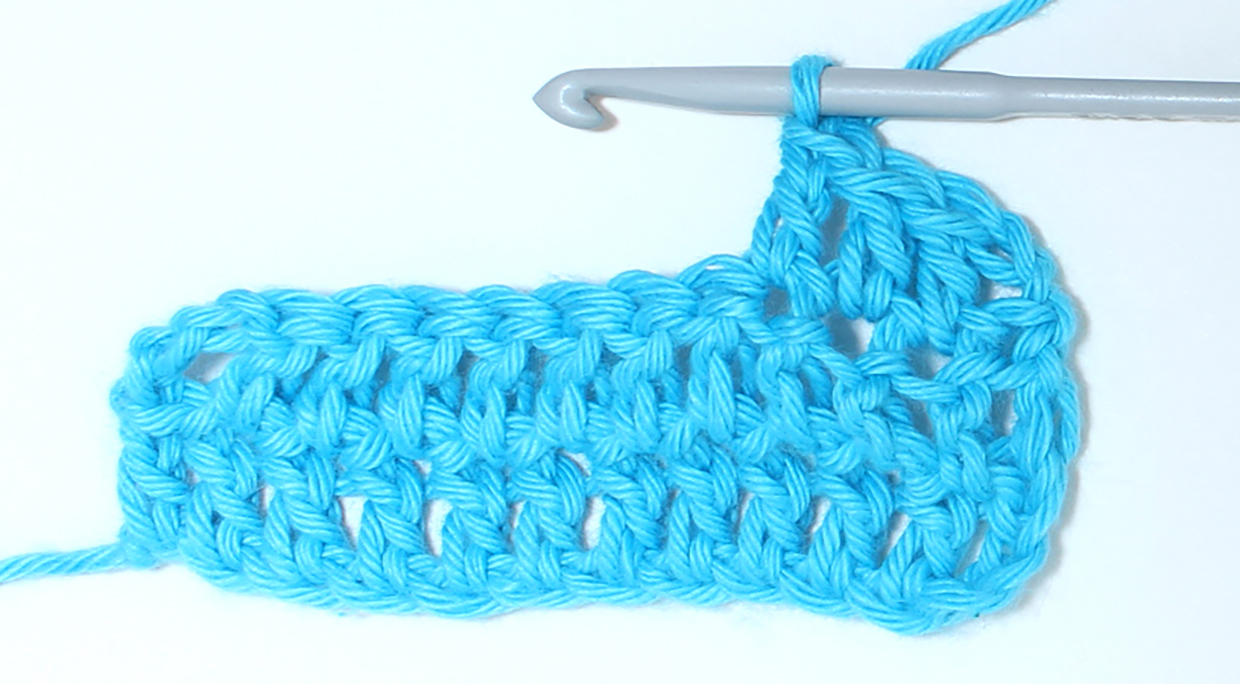
How to treble crochet decrease (tr2tog)
Step 1
To make a normal tr2tog (treble crochet 2 together), start a treble crochet stitch as normal – yrh and insert your hook into the next stitch along, yrh and pull through work, yrh and pull through 2 loops and then STOP – don’t complete the stitch with the final yrh and pull through 2 loops…
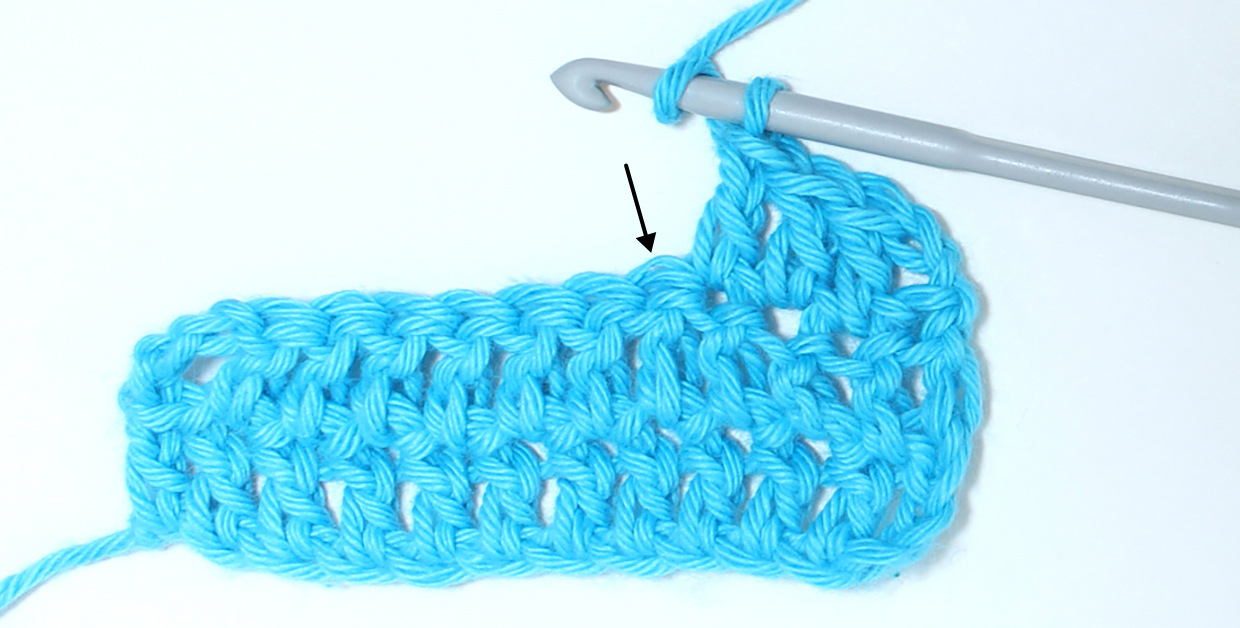
Step 2
…instead now yrh and insert your hook in the next stitch along. Again work a treble crochet stitch up to the last yrh and stop (you should have 3 loops left on your hook)
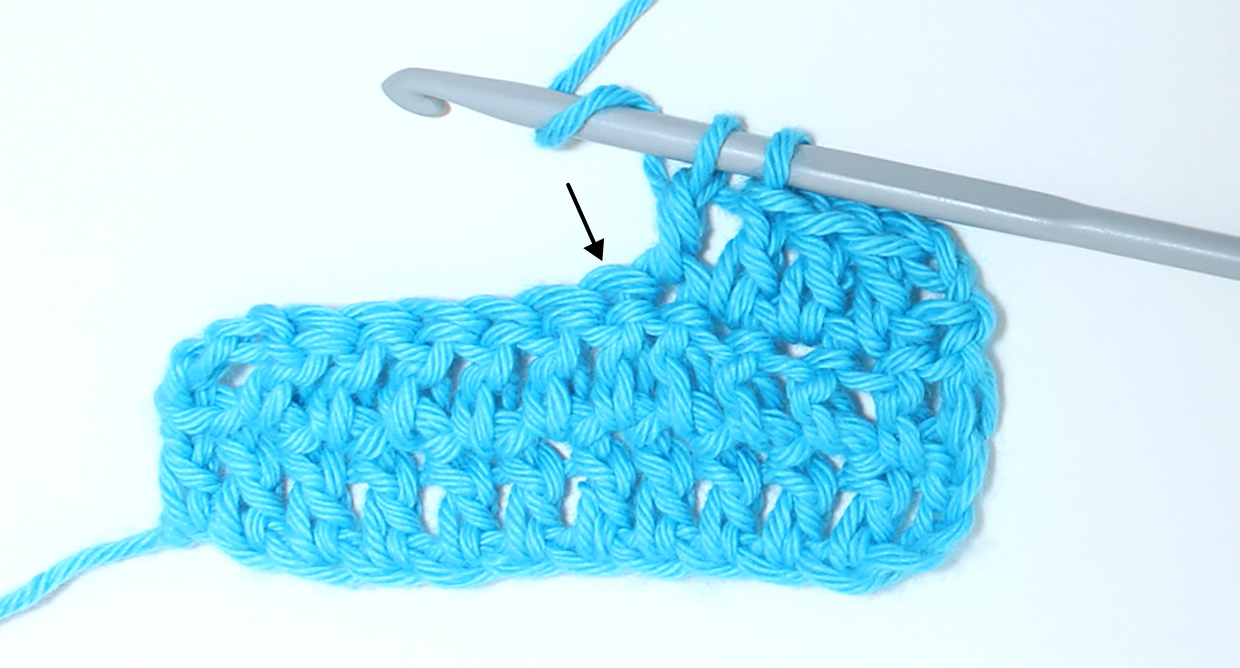
Step 3
Now to finish your tr2tog and bring those incomplete treble stitches together into one single stitch, yrh and pull through all loops in one go.
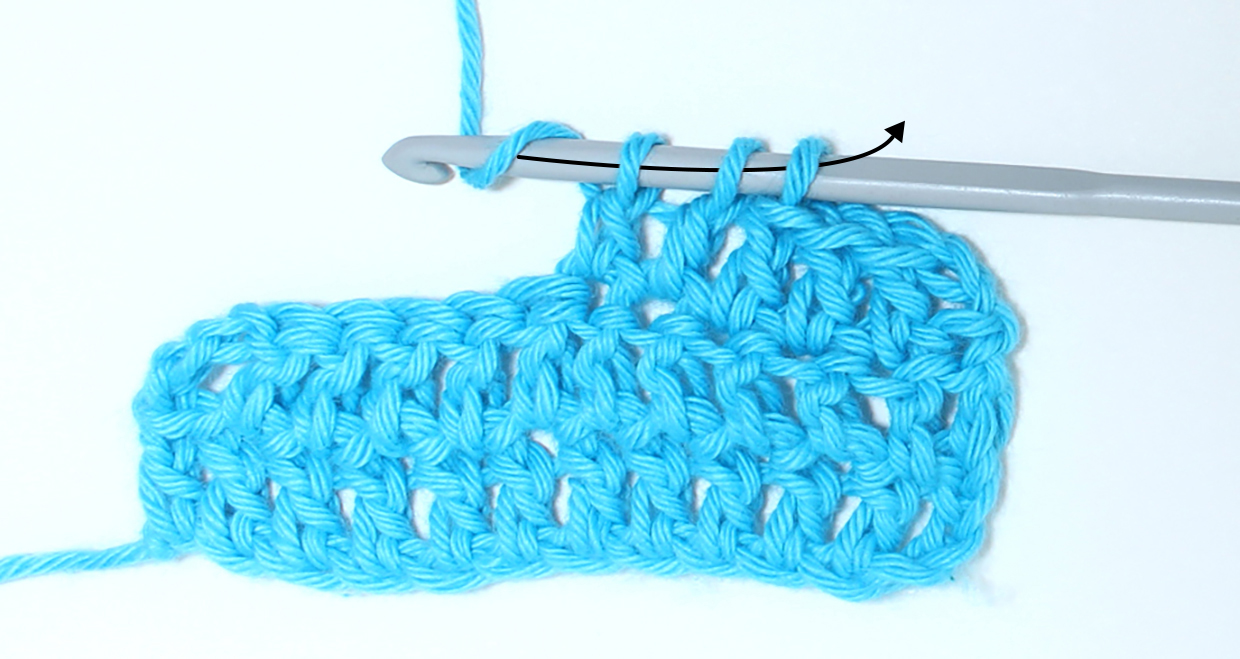
And that’s your tr2tog treble crochet decrease complete!
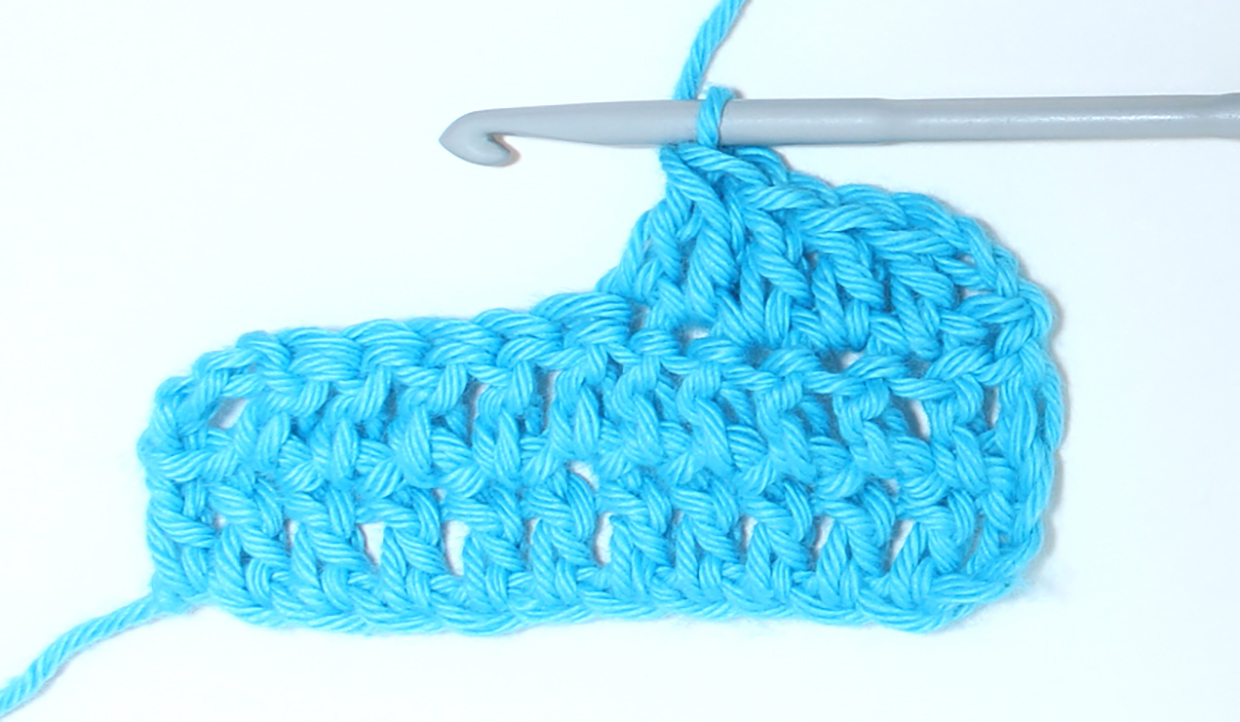
Again working decreases in different positions will have different effects on your final crochet fabric – decreases at the edges will make your edge slope inwards, and decrease worked in the middle of a row will make your fabric curve in a 3D way. We’ve completed our row working a tr2tog at both ends as well as two decreases next to each other in the centre – we’ve marked the two stitches each decrease is worked into as well as the final single stitch that it creates.
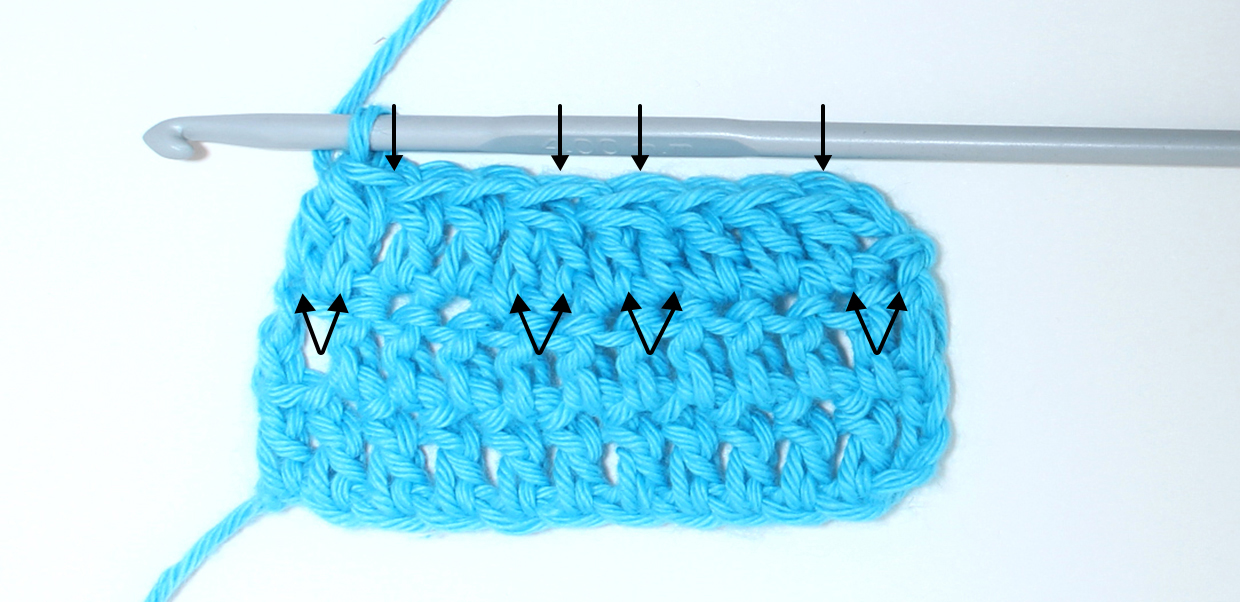
How to crochet a tr3tog (3 treble decrease)
Step 1
Remember when we were looking at double crochet decreases and mentioned that you can also get dc3tog decreases - well the same goes for treble crochet stitches, but they'd be called a tr3tog. Again this is just a case of turning 3 treble crochet stitches into one single stitch, but because treble crochet stitches are a little bit trickier it can be a bit more confusing - but don't worry, we'll show you how!
First. work to the point where you want to make your tr3tog (in the example below we've made our 3ch turning chain and 2 treble stitches)...
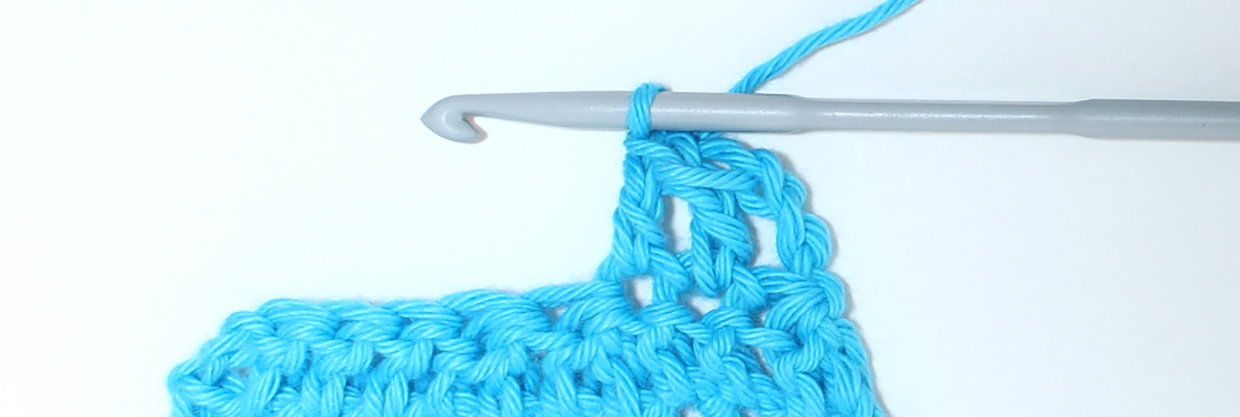
...then like before, work a treble crochet up to the point of the last yrh (remember, yrh and insert your hook into the next stitch along, yrh and pull through work, yrh and pull through 2 loops and then STOP), you should have 2 loops left on your hook...
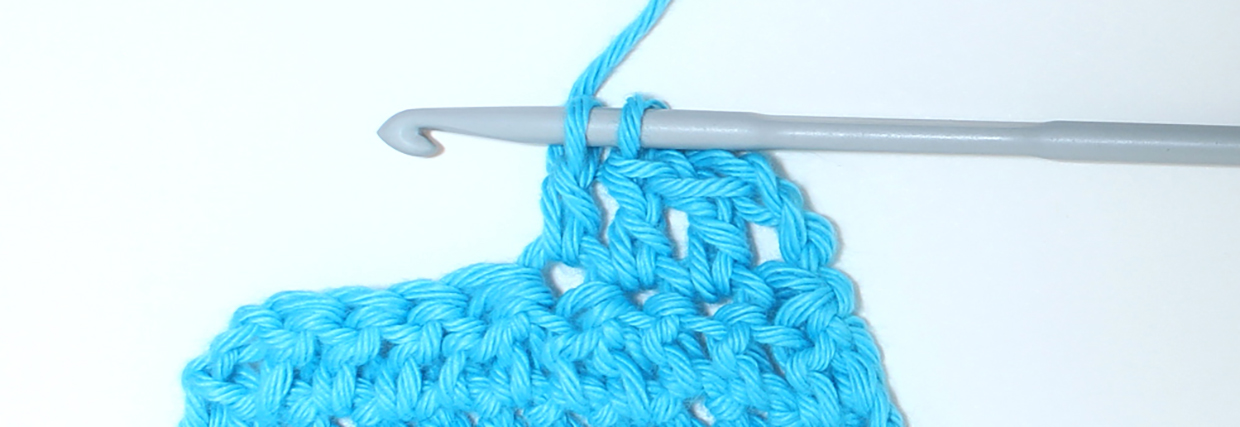
Step 2
...Then do the same again, yrh, insert into next stitch, and complete treble crochet stitch up to the last yrh (you should then have 3 loops on your hook)...
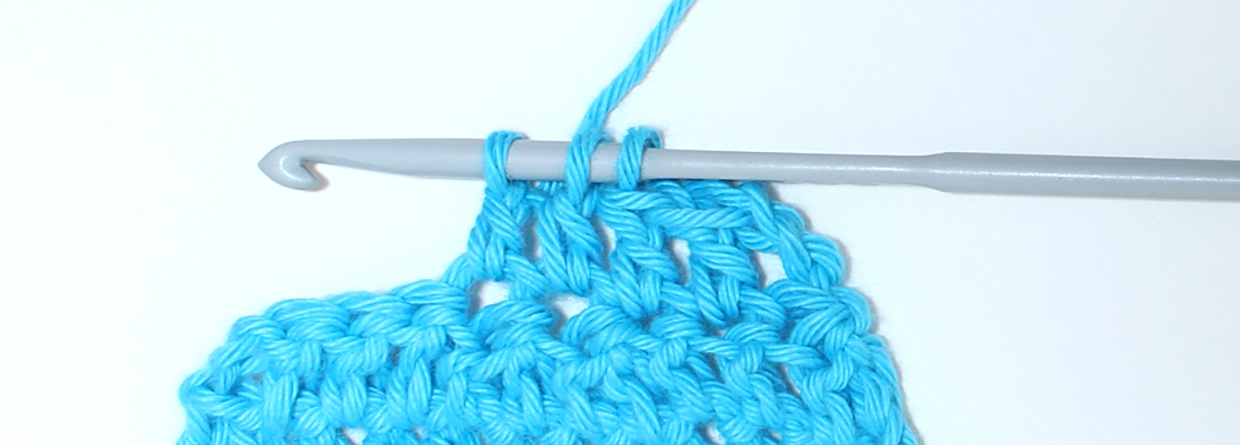
Step 3
... and because we're making a tr3tog, we're going to to that again once more, so yrh, insert into next stitch, and complete treble crochet stitch up to the last yrh (you should then have 4 loops on your hook)...
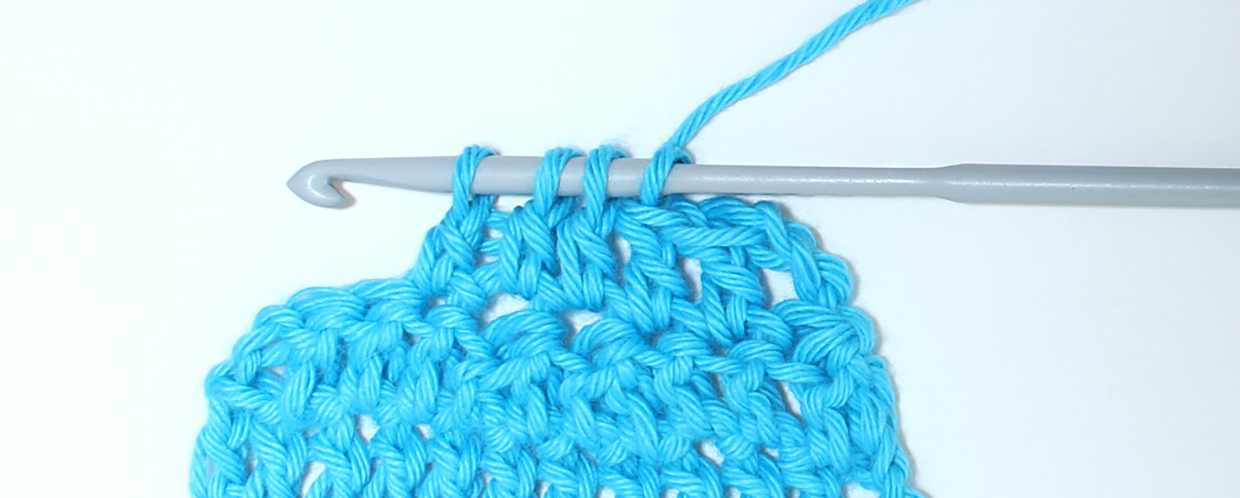
Step 4
And then our final step to bring those 3 incomplete treble stitches together into one stitch, yrh and pull through all of the loops on your hook...
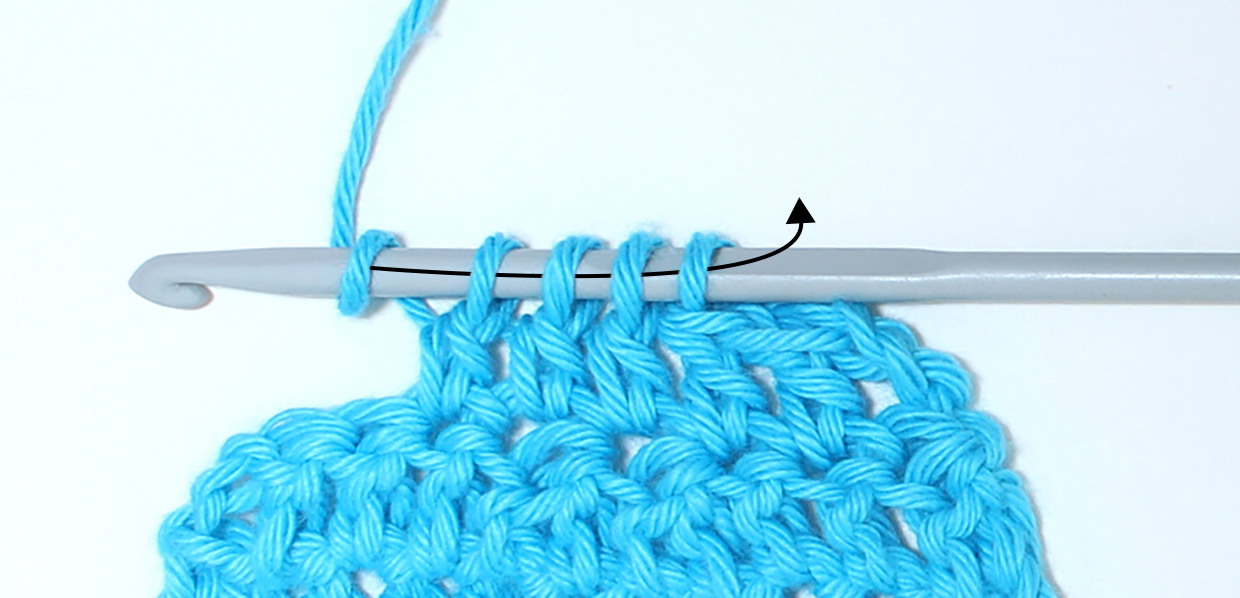
And that's it - you've made a tr3tog decrease. You'll see it's quite an extreme decrease, so they're normally used for quite dramatic shaping (you might see them when making shoulder caps on garments for example). 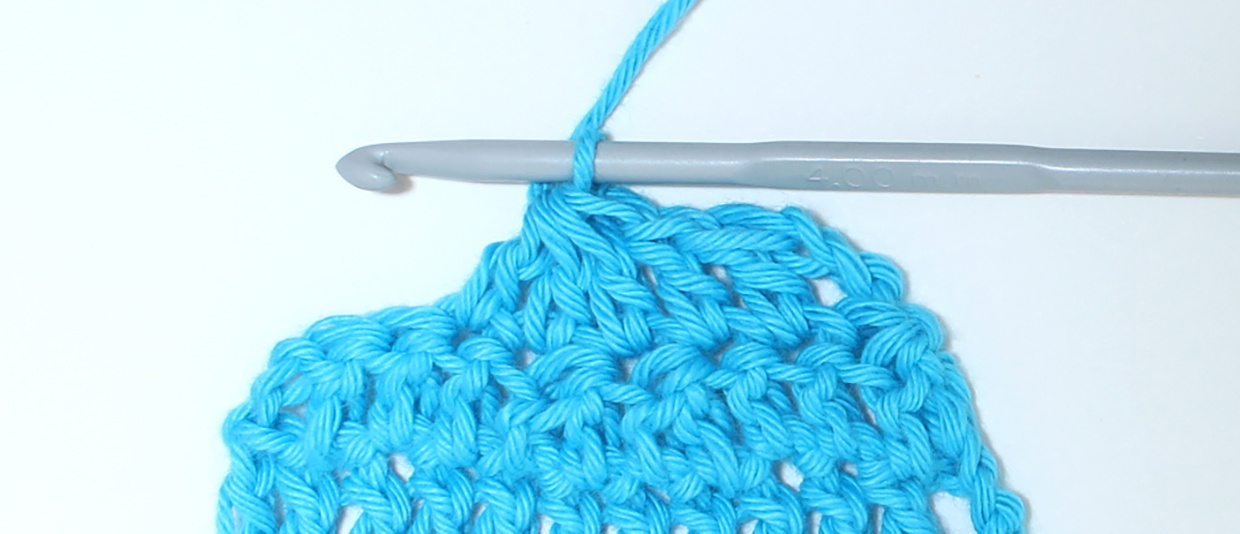
You're probably getting the hang of it now! If you're wondering how you'd make a tr3tog at the start of a row, well you'd simply ch2, then make a tr2tog in the next 2 stitches, and then remember not to work into the turning chain on your next row.
How to htr2tog (half treble decrease)
Step 1
Now that you've tried a couple of decreases, you will probably be getting the hang of it, and remember that same basic theory - it's all about working to the last yrh of a stitch. But one of the stitches that can often catch people out is decreasing with half treble crochet stitches (half double crochet in US terminology).
It's the same basic principle, but it can still be a little confusing due to the amount of loops on your hook, so we'll show you through it just so you're sure! In US terms this would be called a half double crochet decrease or hdc2tog
To make a htr2tog, work up to the point where you want to make you first decrease. Yrh and insert your hook into the next stitch...
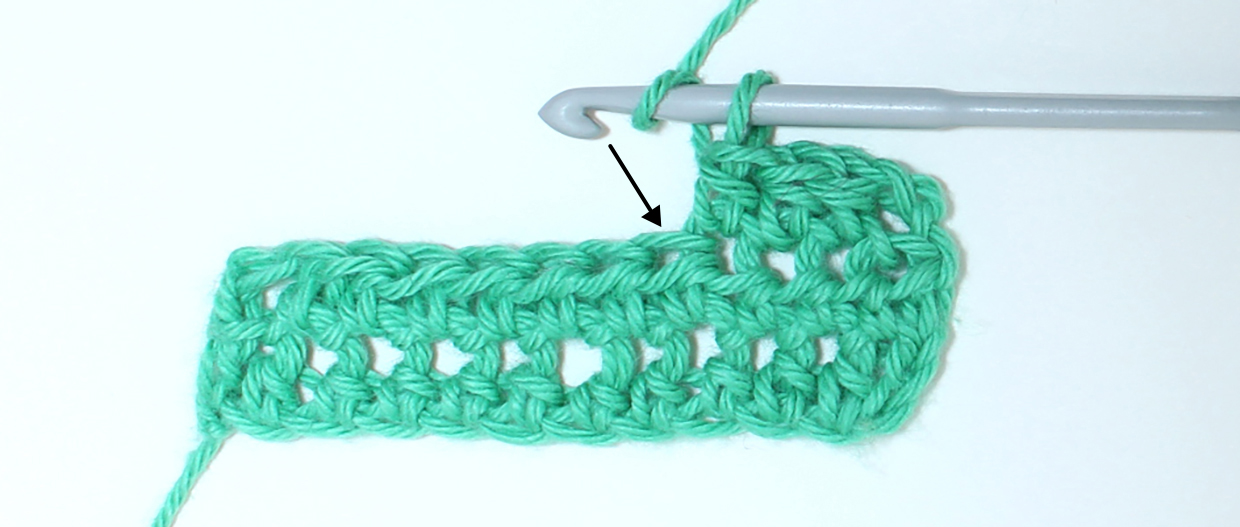
...then yarn and pull through the work - and STOP (don't work the normal following yrh and pull through 3 loops). You should have 3 loops on your hook...
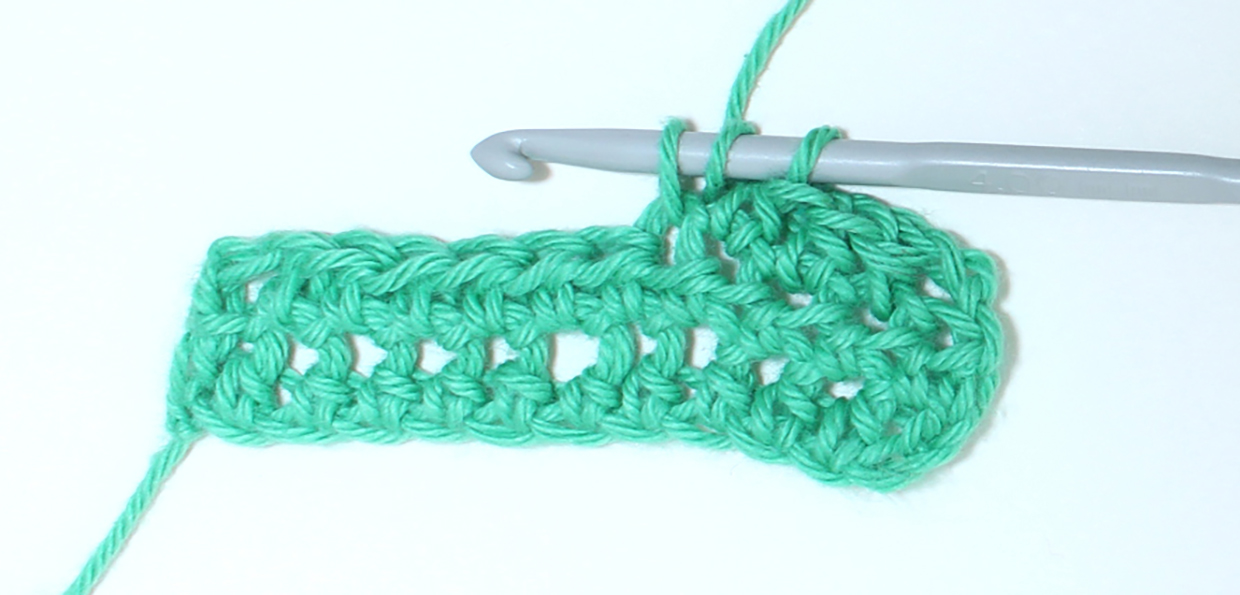
Step 2
...Then yrh, and insert your hook into the next stitch...
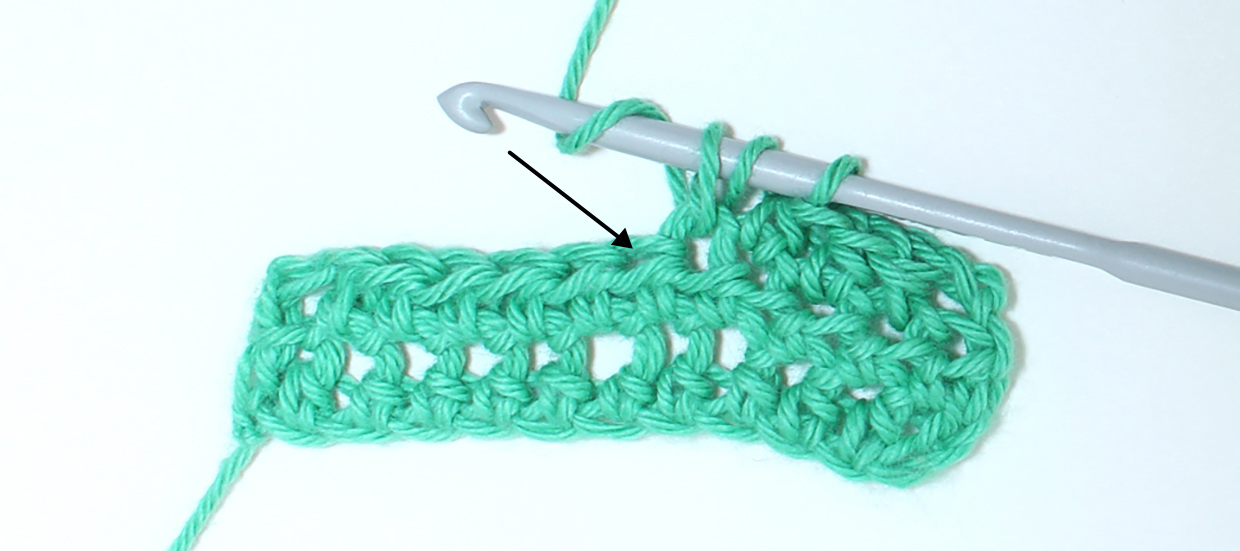
...and again, yrh and pull through the work and STOP - you should now have 5 loops on your hook...
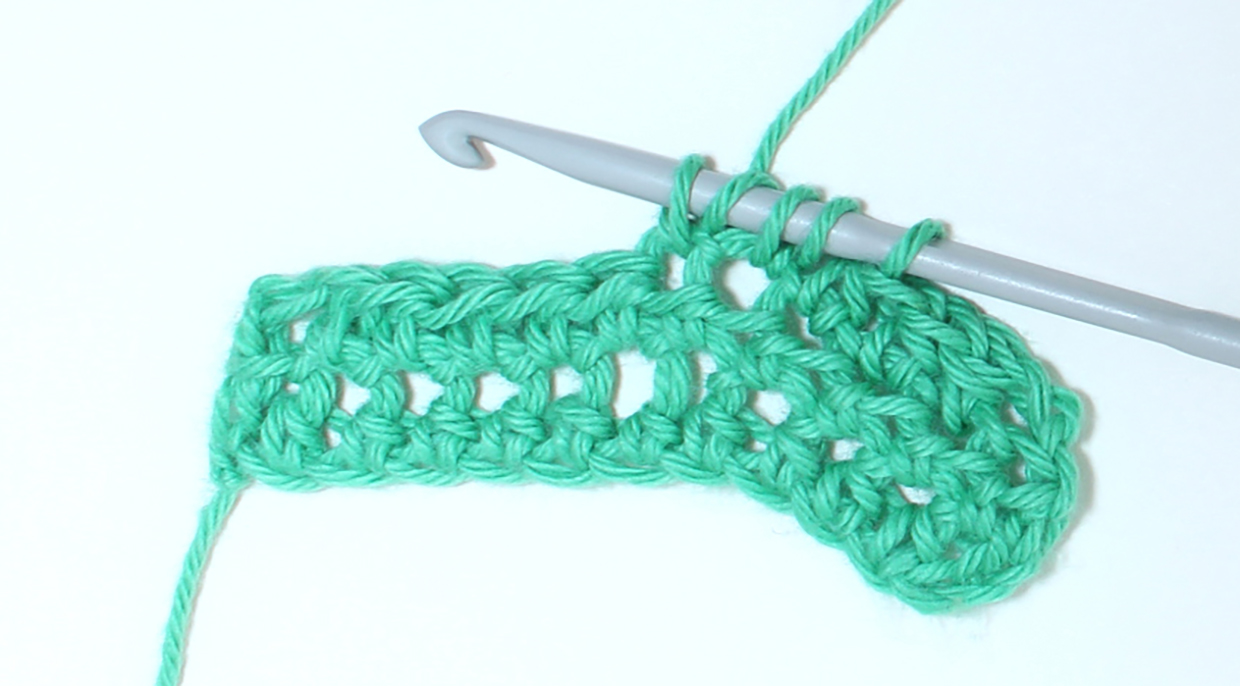
Step 3
...Now to finish the stitch, yrh and pull through all 5 loops on your hook.
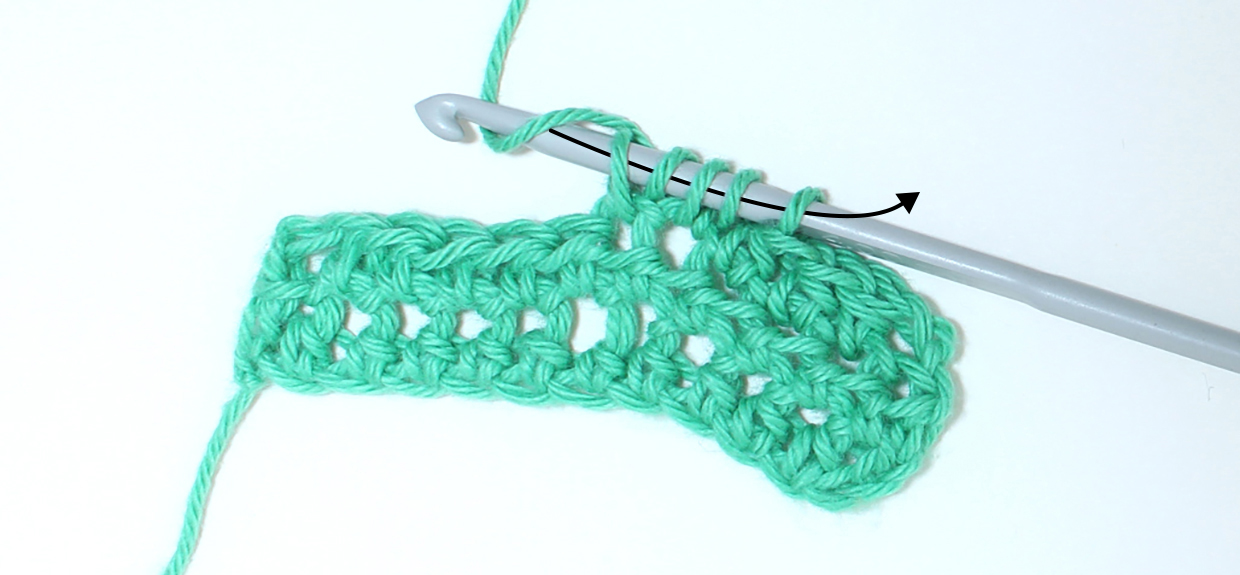
And that's how you crochet a htr2tog!
